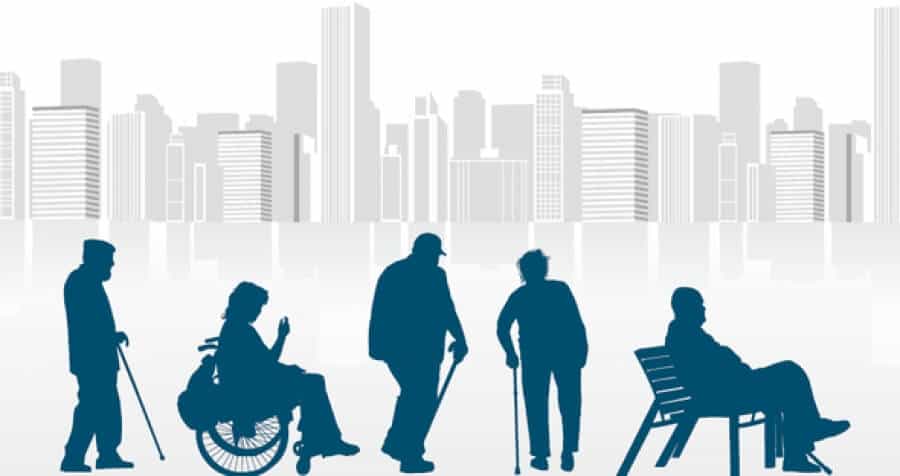The spread of childfree-ideology, freedom, and bringing up "citizens of the world" - what does it all lead to? To the strengthening of minority rights? Obviously. To the extension of freedom? Definitely. To increasing the level of tolerance in society? Oh, yes! And finally, to broadening the outlook of the young and affirming their independence? Maybe. There is only little problem. This free, liberal, tolerant, educated, and independent person will eventually die.
The fact is that some things which seem progressive and comfortable in a given period of time can turn into time-bombs for society over the long term. The introduction of hormonal contraceptives and the legalization of abortion have become such a bomb for the European people. Also, due to these innovations, many European countries have recorded a historically low birth rate over the last couple of decades. The researchers at the Berlin Institute for Population and Development in their work “Europe: Population Change and its Consequences” indicate that today, on average, a woman in Lithuania, Poland, and Slovenia gives birth to 1.3 children. This is the lowest birth rate in the history of mankind! Slightly above is the European average – 1.5 children. For comparison, in the middle of the 19th century the average European woman gave birth to four children. What has this led to and what is it still leading to?
European demography: status quo
In most EU countries, natural population growth rate has fallen to historical lows. Thus, according to 2006 data, the population of Europe was enriched during that year by only 400,000 inhabitants due to natural increase (5.3 million births to 4.9 million deaths). Some countries are living through a period that scientists describe as “when the birth rate is below simple reproduction.” Roughly speaking, if a generation of children does not replace the parents’ generation, the indigenous population will be reduced accordingly. Above all, we are talking about Italy, Greece, Slovenia, and Slovakia. Of course, the total number of people in Europe continues to grow, mainly due to immigration. In 2006, 1.5 million foreigners moved to the EU. Generally speaking, today Europe has turned into a destination for global migration rather than its source. In the 18th-20th centuries, millions of people left the Old World to settle elsewhere, thus spreading their culture, knowledge, and skills. Today the situation is quite the opposite. In most Western European countries the foreign-born population comprises 7-15% of the total population and according to scientists, these figures will only grow. “The main reason is the consequence of population aging and of labor shortage in Europe. For example, in Germany and Hungary, even migration cannot make up for the decrease in the working-age population, which means that these countries will carry out even more open and bold immigration policies,”- states the research of the Berlin Institute.
Europe 2060: land of retirees and immigrants
In several decades, the expression “old Europe” will state a literal truth. According to EUROSTAT, the average (!) age of Europeans will reach 48 years by 2060.
Respecting the population as a whole, according to EUROSTAT, the number of EU-27 citizens will continue to grow due to immigration, albeit at a reduced rate. However, by 2060, immigrants will not be able, on balance, to provide over-all population growth due to a significant reduction in the indigenous population. According to EUROSTAT estimates, in 47 years only 9 European countries will be able to maintain population growth. Please note that we are not talking only about a reduction in the number of ethnic Germans in Germany, it is already reduced now. The concern is that in quite a short period of time the number of Germans would be so small that even the in-flux of Turks, Arabs, and other immigrants would not be able to maintain the population of the country at a stabilized level.
Demographic aging is an inevitable process assuming current trends continue. This will lead to a tremendous burden on many institutions, including the social system and the labor market. And if today 100 Europeans of working age support 25 retired persons, by 2060 this ratio will worsen to 53 retirees per 100 young Europeans. How will Europe deal with these problems? Patching the “holes” with foreigners will inevitably lead to a greater ethno-cultural and religious diversity, which may result in social protests at an unprecedented level. We are not talking about “tolerance and liberality,” but about the continued existence of some European nations.
Perhaps, it’s too early to sound the alarm, but let us agree that these new trends raise the specter of a second time-bomb, rather than a cure for the existing demographic problems.
Childlessness kills. Danish professor Esben Agerbo at Aarhus University studied nearly22,000 childless couples from 1994 to 2005. The results of his analysis were shocking: women who did not give birth to a child and rejected all the procedures to ensure maternity experienced four times the mortality rate of those Danish women who brought up at least one child. Similar results also applied to childless men. Among the possible causes of early mortality, doctors mentioned cardiovascular disease, dangerous and provocative behavior, alcohol and drug abuse, vulnerability to depression, and mental disorders.
Support us!
All your donations will be used to pay the magazine’s journalists and to support the ongoing costs of maintaining the site.
Share this post
Interested in co-operating with us?
We are open to co-operation from writers and businesses alike. You can reach us on our email at [email protected]/[email protected] and we will get back to you as quick as we can.









